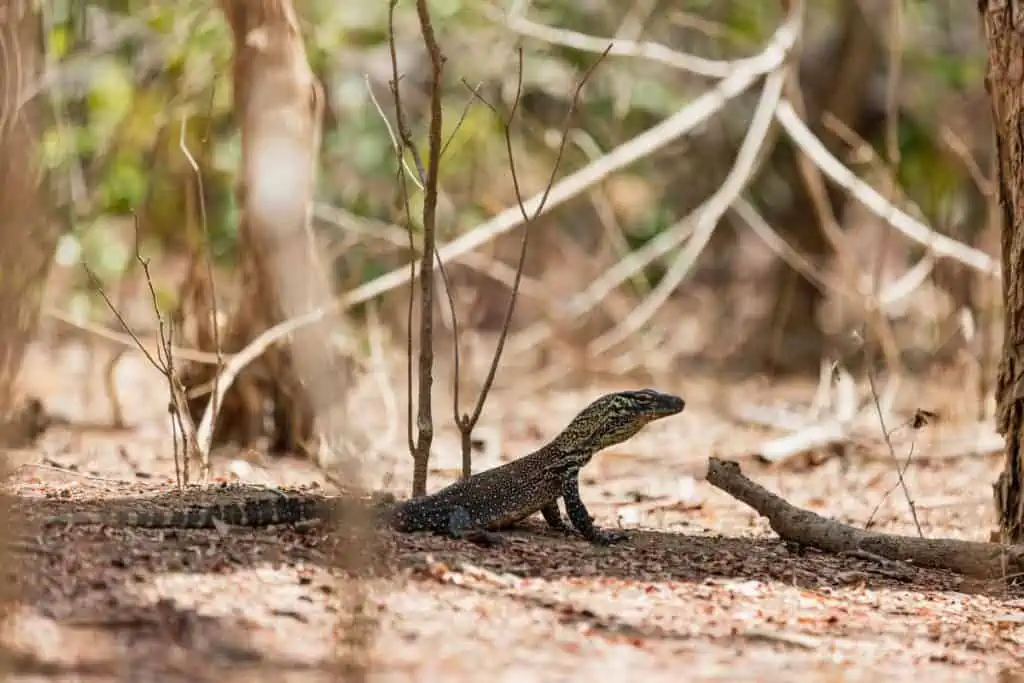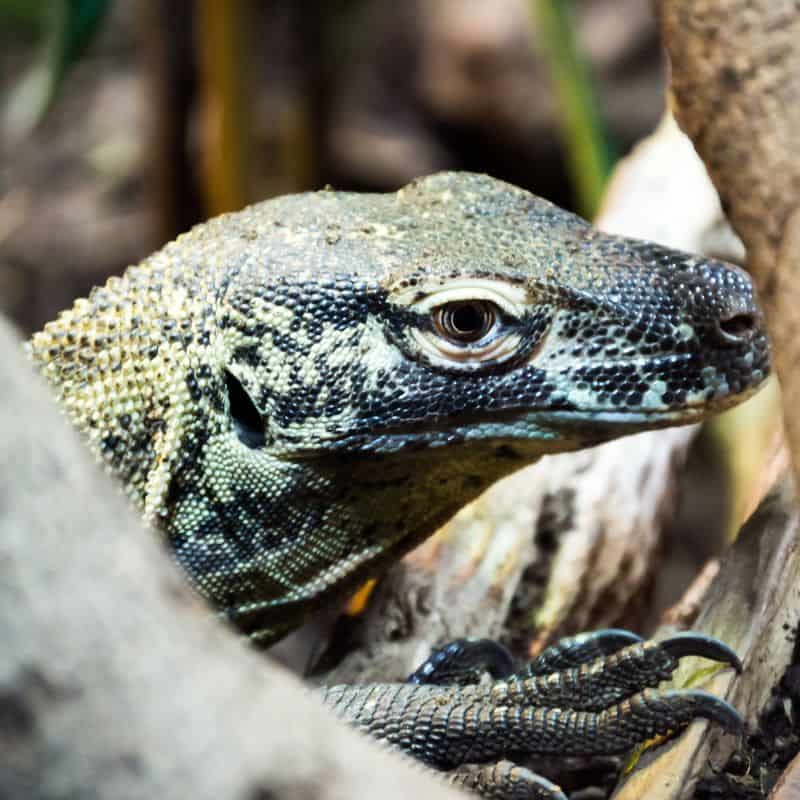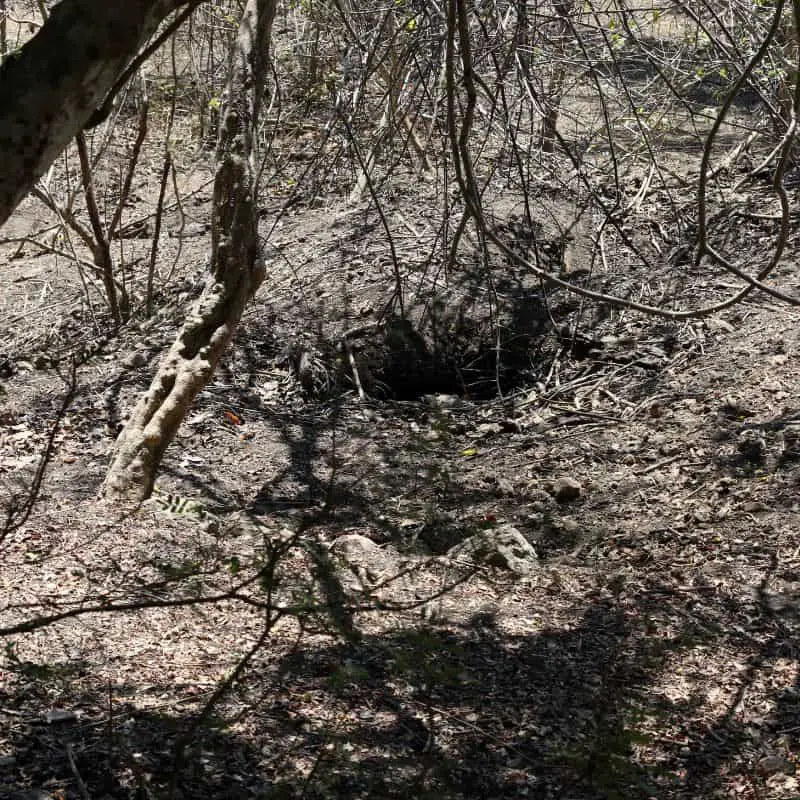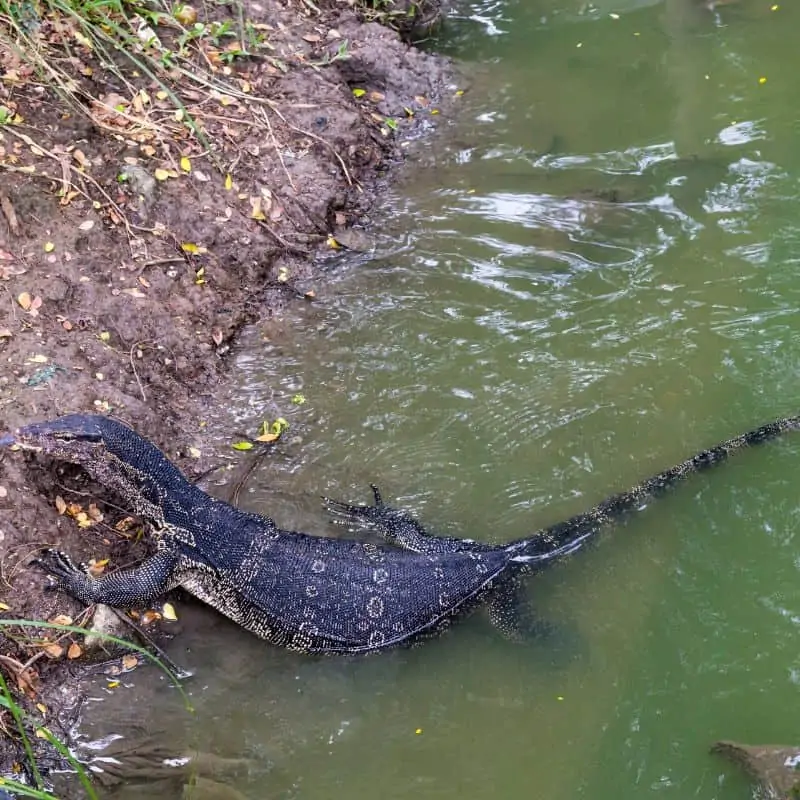With over 3000 lizard species worldwide, none is as interesting as the Komodo Dragon. These unique and rare creatures have a fascinating life cycle — from hatching out of their eggs as miniature versions of their adult form.
Baby Komodo Dragons, or hatchlings, are greenish-colored lizards that weigh less than 100 grams. They develop in grapefruit-sized eggs for nine months before breaking out of their shell and going into the wild. They live away from their parents, on trees, to protect themselves from getting eaten by them!
Baby Komodo Dragons are interesting offspring, and you won’t find any other animal like it. This article covers ten interesting facts about them.

- 10 Facts About Baby Komodo Dragons
- 1. Baby Komodo Dragons Are Called Hatchlings
- 2. They Aren’t Born Gray
- 3. Hatchlings Weigh Less Than 100 Grams
- 4. Komodo Eggs Are Large
- 5. A Clutch Has 20-25 Eggs
- 6. The Eggs Develop in 9 Months
- 7. Baby Komodos Don’t Stay With Parents
- 8. Hatchlings Live in Trees
- 9. Baby Komodo Dragons Eat Insects and Lizards
- 10. Hatchlings Have to Survive Alone
- Final Thoughts On Baby Komodo Dragons
- FAQs
10 Facts About Baby Komodo Dragons
Let’s find out about these little adventurers:
1. Baby Komodo Dragons Are Called Hatchlings
Baby Komodo Dragons are called “hatchlings,” like all newly hatched lizards.
Since the practice of creating exclusive names for the young ones of an animal species fell out of fashion before the discovery of the Komodo dragons, their babies do not have a unique name.
2. They Aren’t Born Gray
Komodo babies have greenish bodies with black and yellow bands.
As they age and grow older, their color changes to solid gray and reddish-brown.

3. Hatchlings Weigh Less Than 100 Grams
After hatching from the egg, a baby Komodo weighs below 100 grams. Its average length is 16 inches.
The babies grow rapidly and weigh about 25 kilograms by age 5, with an average length of 6.5 feet.
It takes them 8 to 9 years to grow into mature adults that weigh 70 kilograms on average.
Here is a table summarizing the physical characteristics of Komodo Dragons at different ages.
| Characteristic | Newly- Hatched Komodo | Young Komodo (5 Years) | Adult Komodo |
|---|---|---|---|
| Color | Greenish | Solid Gray/ Reddish brown | Solid Gray/ Reddish brown |
| Weight | <100 Grams | 25 Kilograms | 70 Kilograms |
| Length | 16 Inches | 78 Inches | 91 Inches |
4. Komodo Eggs Are Large
Baby Komodo eggs are approximately the size of a grapefruit.
They are almost twice the size of chicken eggs and weigh 125 grams.
5. A Clutch Has 20-25 Eggs
Female Komodo dragons mostly lay about 20-25 soft and leathery eggs each time they reproduce. However, a healthy female can even lay 38 eggs in a single breeding season!
Most females will lay eggs once a year, mainly in September. The group of eggs is known as a “clutch.”
They lay their eggs in a nest like birds. Females mostly dig several large holes in the ground and deposit their eggs in one of them. They may also use abandoned nests of megapode birds! Opting for the latter option saves them time and energy.
Additionally, the females ensure that their nest is deep (e.g., 2 meters into the ground). The deepness creates an ideal environment for the eggs with stable temperatures and sufficient moisture.

6. The Eggs Develop in 9 Months
Komodo dragons lay their eggs seasonally between August and September. The eggs then take 8-9 months to develop and hatch.
Females guard their nests for an extended period to protect them from predators. This is quite unusual for lizards as most species leave their eggs unattended.
Guarding eggs is difficult for females as they have less time to look for food. So, they end up losing considerable weight during this time.
After three months of looking after the eggs (usually by December), the female Komodos will stop guarding the nest. After this, the eggs develop independently for the next 5-6 months.
7. Baby Komodos Don’t Stay With Parents
Although the mother incubates her eggs for several months, the babies don’t live with the parents after hatching.
That is because Komodo dragons usually eat their young when food is scarce.
Up to 10% of an adult Komodo’s diet consists of baby Komodos.
8. Hatchlings Live in Trees
After hatching from their eggs, babies quickly tunnel upwards from their nest and make their way to the nearest tree.
They use their claws to climb up and seek shelter in the canopies of trees. Baby Komodos do this to protect themselves from larger dragons that may eat them.
Furthermore, their greenish-colored bodies blend in with the trees and hide them from other predators.
The babies spend the first year of their lives living in the trees, with sufficient food sources and cover. They rarely come down onto the ground during this period.
Once they grow a little bigger, the baby Komodos look for food on the ground. After getting their food, they climb back to the tree tops for protection.
As the Komodos grow bigger, they get too heavy to climb trees. Then, they begin living on the ground.
9. Baby Komodo Dragons Eat Insects and Lizards
Eggs usually hatch during the wet season, March and April. This is an ideal time for hatchlings to come out, as they will have abundant insects and small lizards to eat.
After growing a little bigger, the immature Komodos will include bird eggs, rats, and reptiles like snakes in their diet.
10. Hatchlings Have to Survive Alone
Komodo Dragons aren’t social. They live alone and aren’t found in groups like other animals.
So right after they hatch, they begin learning to survive independently.
Besides staying in trees, baby komodos also cover themselves in adult komodo feces.
The feces musk their scent and keep adult Komodos away from them.

Final Thoughts On Baby Komodo Dragons
Komodo dragons are fascinating specimens, especially their hatchlings. They are self-sufficient and can look after themselves from the second they hatch.
These phenomenal creatures may look cute and tiny, but you’d want to keep your distance from them as they have a poisonous bite.
FAQs
Can Komodo Dragon Mothers Eat Their Own Babies?
Komodo dragons eat their children. So, the children don’t live with their parents. Instead, they escape their nests and seek shelter in trees immediately after hatching.
What Do Baby Komodo Dragons Eat?
Baby Komodo dragons eat insects and small lizards like geckos immediately after hatching. After growing a little older, they also eat reptiles and rats.
Can You Keep A Baby Komodo Dragon As Your Pet?
Keeping baby or adult Komodo dragons as pets is illegal, as they are endangered and dangerous animals. They can bite humans and potentially cause lethal injuries.
